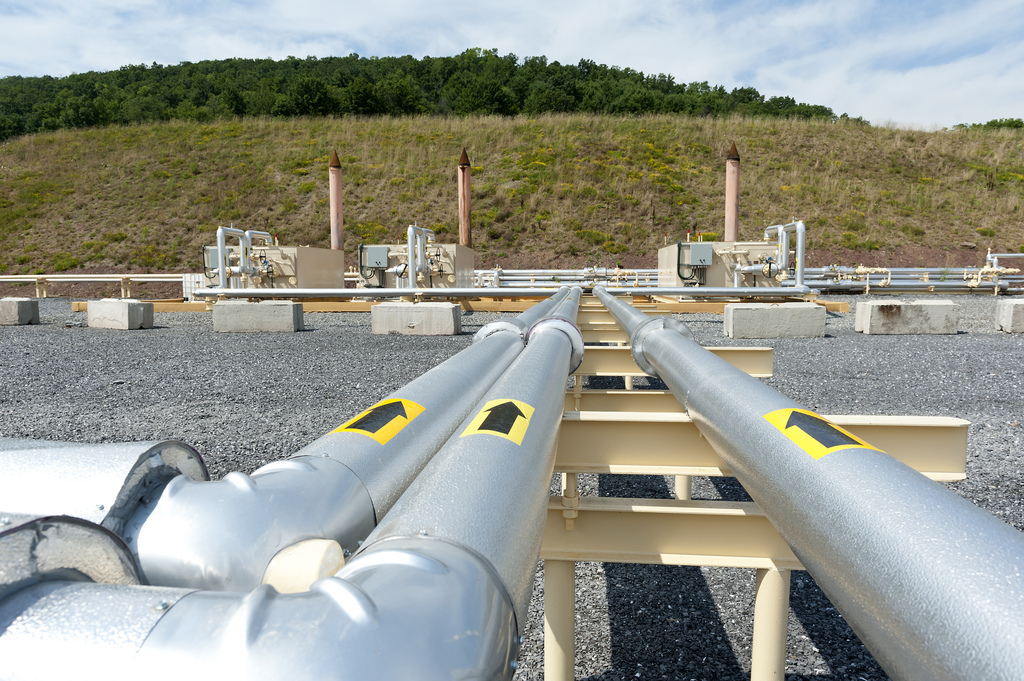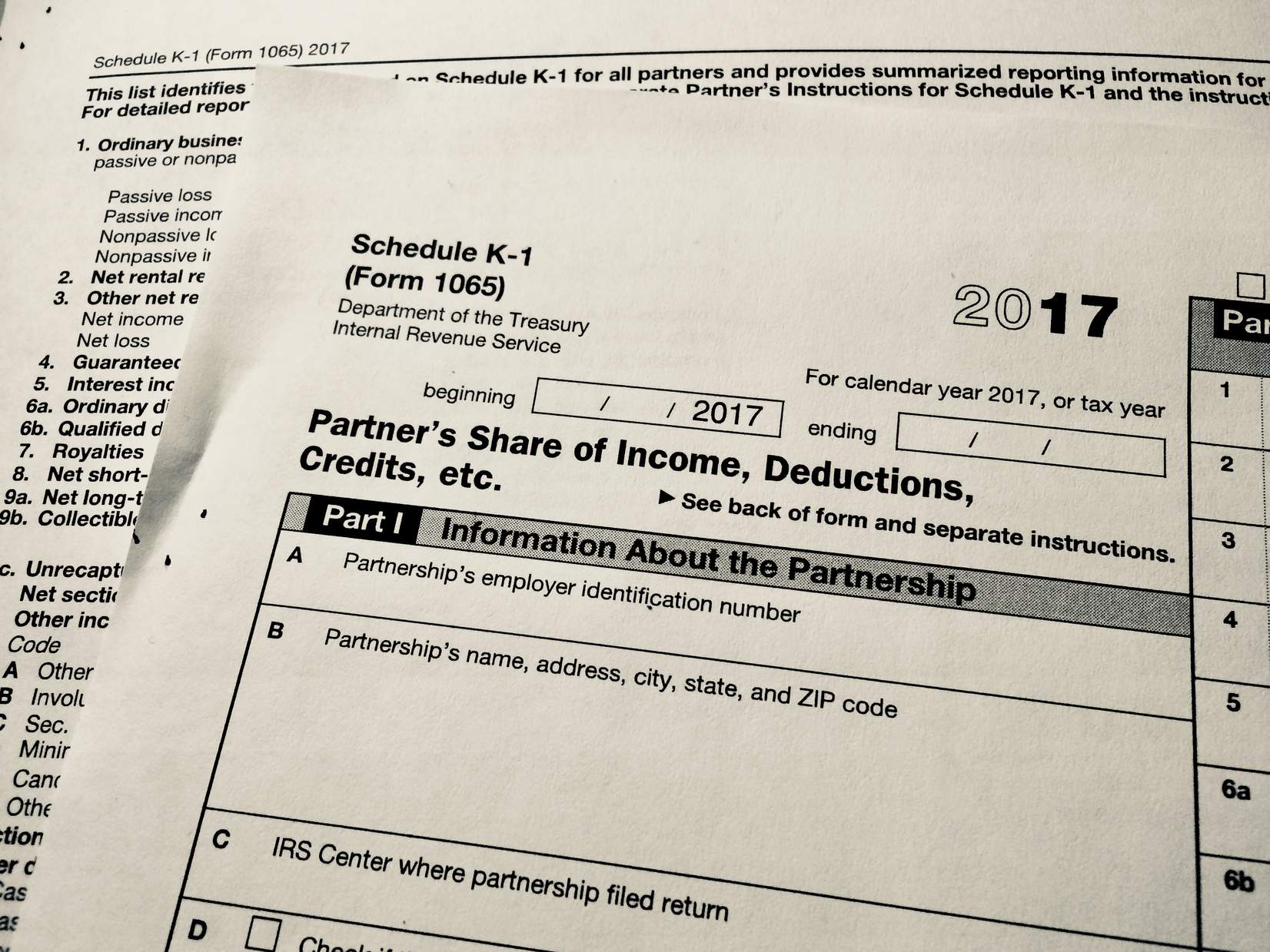About a half decade ago, as the shale drilling rush was sweeping across the U.S., drillers needed upfront cash — and quick — to let them snap up acreage, drill and frack exploratory wells, and hone their skills at the horizontal drilling and hydraulic fracturing (fracking) that fueled an oil and gas boom.
Bankers and financiers began attending shale industry conferences, marketing a clever idea. By dusting off an obscure part of the tax code, drillers and pipeline builders could attract a different class of investor than would usually look at a boom-and-bust prone industry, an investor hunting for stability and predictability. Form a Master Limited Partnership, or MLP, shale drillers and pipeline builders were advised, and you’ll be able to access that capital.
The pitch for investors on MLPs was hard to resist: They “offer high yields and low taxes,” as the Financial Times described them in 2013. The tax benefits were a huge part of the draw, especially for wealthy investors (not just individuals, but also pension funds, which poured in billions).
The biggest benefit: a tax loophole that lets MLPs dodge so-called “double taxation,” paid by regular corporations and much-hated by investors, in which tax is paid both by the corporation on earning money and by investors as personal income. No corporate income tax, more money to go around for everyone but the government.
In 2000, MLPs had a total market value of less than $14 billion; by 2014, they had drawn over $500 billion in investments and some people were breathlessly predicting MLPs could wind up a trillion-dollar asset class.
And MLPs offer another quirk that investors found exciting. Holders not only stand to collect “distributions,” or a percentage of profits every three months, they can also trade MLP shares like stocks, meaning there were two ways to profit during the sector’s rapid expansion.
Meanwhile, the tax benefits were substantial — from 2009 to 2012, MLPs shaved $13 billion dollars off their beneficiaries’ tax bills, one 2013 report calculated.
Investment firms pushed MLPs hard. In 2014, Bloomberg reported that 109 out of 114 MLPs had favorable recommendations from the majority of Wall Street analysts covering them. “At the top, everybody’s a believer,” Timothy Gramatovich, Chief Investment Officer at California-based Peritus Asset Management, told Bloomberg.
Wall Street loved them for their own reasons: the $890.3 million that Bloomberg calculated MLPs earned banks in fees in 2013. “MLPs are Wall Street’s dream,” a Hedgeye Risk Management analyst observed. “They’re fee machines.”
MLPs helped to pour gasoline on the shale industry’s fire, fueling the rapid expansion of fracking nationwide. In a perfect trifecta of poor public policy, the benefits from an energy MLP are exclusively available to producers of non-renewable fuels, set up a tax shelter benefitting these corporations, and create incentives for companies to go deeper into debt.
That’s right — MLPs offer a tax break for U.S. companies to produce non-renewable energy, a break that’s not available for wind, solar, geothermal, or hydroelectric energy companies, and their use rapidly expanded at a time when the rest of the world was busy laying the groundwork for huge leaps in the transition to renewables.
The problem now is, many MLPs may not even prove to be sound investments.
Running the Toll Booths
Heavily tilted towards pipeline companies, MLPs were often marketed to investors as running the “toll booths” on the shale highway. Investors were advised: Don’t be the one who funds the risky fracking company; be the one who charges a tiny percent for every barrel of oil or million cubic feet (mcf) of natural gas those frackers pump. MLPs had the potential to become the “primary capital provider” for the infrastructure required for the shale rush, analysts predicted.
But even those risky fracking companies were getting in on the MLP game, spinning off assets like production from existing wells into a package that would let drillers raise more capital while offloading the risk that their wells might under-perform over the long run.
Because MLPs pay out a huge chunk (sometimes 90 percent) of their earnings as quarterly “distributions,” they constantly need new sources of cash. If that cash comes from a slow drip of income from an existing pipeline, MLPs can be extremely stable. But when cash flow continually comes from borrowing (often to fund new projects), MLPs can wind up accumulating debts fast, as they borrow one quarter, then borrow more the next.
And when MLPs go bad, they carry a double-punch, as many investors found out in 2016 when oil prices crashed. Their tax benefits reverse, and investors face both losses and a climbing tax bill at the same time. That happened the first time shale MLPs suffered a major crash in 2015-2016, as falling oil prices caused many investors to flee.
‘Dry Wells? Your Problem’
Now, John Dizard, columnist for the Financial Times who presciently warned about the shale bubble back in 2010, is pointing to evidence of an “oil and gas infrastructure bubble” that he says is bursting for a whole new reason — even as oil prices have begun to creep higher.
Investors might reasonably expect that the pipelines, gas wells, and processing plants their money helped to fund will generate returns for decades, even if the frenzied expansion of the early shale years has slowed amid two years of low oil prices. But it’s a little more complicated than that, Dizard warns.
Pipelines, refineries, and other infrastructure are being built up rapidly around shale oil and gas fields, as shown here in Pennsylvania. Credit: Max Phillips (Jeremy Buckingham MLC), via Beyond Coal & Gas Image Library, CC BY 2.0
“Delve deeper into the oil and gas basins, though, and you hear the rest of the story. Oil and gas fields deplete … and shale fields do so faster than others,” Dizard wrote. “That means the pipelines and processing plants eventually have sandpits at one end and impatient consumers at the other. No matter how many years’ service the pipes and plants could provide, there will not be the production to fill them.”
“Dry wells? Your problem,” he warned in an April 13 column. “That fate has just arrived for the pipes and plants connected to some of the first great shale-gas plays in Barnett, Woodford, and Haynesville. In September, Wells Fargo analysts estimated that four pipelines serving the original boom areas would be re-contracted for much lower volumes.”
While fortunes have been made and lost predicting the future of the oil and gas industry, Dizard has a track record that makes him worth paying attention to. He was one of the earliest prominent skeptics about the shale gas rush — and any investor who sold their stock in Chesapeake Energy, poster-company for the shale gas rush, when Dizard aired his doubts back in July 2010 would have walked away at over $21 a share, compared to the $2.95 a share that Chesapeake’s stock currently commands.
And while perhaps no one could have predicted the exact nature of the legal troubles and scandals that dogged Chesapeake Energy, the issues Dizard raised back in 2010 continue to loom over the shale industry: fracking costs a lot of money and shale wells dry up fast.
Beyond Chesapeake, the shale industry has continued to drive oil and gas production growth, but it’s done so while losing money hand over fist, with The Wall Street Journal reporting in December 2017 that the industry has spent a stunning $280 billion more than it has earned.
Eight years after Dizard aired his first warning, there’s little question that individual shale wells decline fast. Over half of America’s oil production now comes from wells that were drilled in the last two years, the Energy Information Administration reported last year. For years, producers kept Wall Street interested by sprinting from one new discovery to the next — but many observers have started to catch on.
“Hot shale plays tend to fall short of expectations after a few years, and the Permian Basin will be the next big test of the pattern,” Stephen Rassenfoss, Senior Editor at the Journal of Petroleum Technology, wrote in September 2017.
Wall Street Moves On
Shale drilling MLPs have recently been falling out of favor on Wall Street, creating friction between the industry and its financiers. Some shale executives argue that MLPs can be at their finest when they bundle together operations at all stages of oil and gas production, giving drillers insights into the pipeline landscape and pipeline companies insights into prospects for drillers.
But Welles Fitzpatrick, managing director of Exploration and Production (E&P) research at SunTrust Robinson Humphrey, argued at the shale gas conference Marcellus Midstream 2018 that from an investor’s standpoint, combining an exploration and production company with a pipeline company made little sense. “You’re essentially selling a bundle that people just don’t like — I mean, it’s not like internet and phone, it’s like internet and karate lessons or something,” he said. “It just doesn’t make sense.”
And the sharks aren’t only circling MLPs because of the immediate profits to be made from breaking them up. They’ve been reeling from a number of factors.
“What happened in the downturn in 2015-2016, volumes were down and those pipelines were not pushing through enough volume in either crude or natural gas, and therefore [MLPs’ earnings were] down,” said portfolio manager Gary Bradshaw of Hodges Mutual Funds, which controls $1.5 billion in assets. “We’ve almost overbuilt many of the pipelines out there. A lot of these companies had to finally cut their dividends, and it really left a sour taste with investors.”
Leveling the Playing Field?
The tax forms used for a Master Limited Partnership. Credit: Sharon Kelly, DeSmog
In the 1980s Congress moved to curtail the use of MLPs by many industries, passing legislation that limited their use to companies that earn 90 percent or more of their income from a specific list. If you built a pipeline, logged timber, or mined coal, you qualified; run a restaurant or build a windmill, you were out of luck. They revisited the issue in 2008 and added a handful of other energy sectors including biofuel, but the biggest renewable energy growth sectors like wind and solar were left out.
Environmentalists have debated ever since whether to push for an expansion of MLPs to cover wind and solar companies or for the structure to be wiped out.
A Senate bill, The Master Limited Partnerships Parity Act, was introduced in November by Delaware Senator Chris Coons and would make wind and solar companies eligible to form MLPs. The bill has drawn endorsements from a wide array of institutions, including NRG Energy, Williams, and DuPont as well as the Union of Concerned Scientists and an array of renewable energy industry groups.
But some fear that any benefits to the wind and solar industries would be small in scope and outweighed by the benefits of preserving the tax break for the fossil fuel industry.
“Many would agree that promoting renewable energy is a worthwhile endeavor because it would promote a cleaner environment and reduce dependence on imported oil. Allowing renewable energy access to the same public equity capital as the oil and gas industries would be an important step in promoting renewable energy growth,” wrote accountant David Powers in a 2017 law review article.
“However, eliminating the ability of the oil and gas industry to utilize the MLP rather than opening it up to the renewable energy sector best achieves this objective.”
Renewable energy companies have another option if they’re hunting for ways to claim some similar benefits while funding a rapid expansion of their own — at least for now.
The wind and solar industries use another corporate structure called a YieldCo to create a “synthetic MLP.” But YieldCos rely on tax credits (the Investment Tax Credit and the Production Tax Credit) that are being phased out and will be gone in five years. Unless something changes, they will only be available for a brief period of time.
At the moment, the political climate in Congress has stalled reform efforts. Texas Republican John Cornyn handed MLPs a bit of leverage by slipping a last minute amendment into Trump’s tax reform package that preserved some of their tax benefits.
But whether the law changes or it remains the same, the financial prospects for MLPs remain dodgy, with one major shale MLP filing bankruptcy just last month — leaving behind assets of $61.4 million against liabilities of $654 million, according to Reuters.
Follow the DeSmog investigative series: Finances of Fracking: Shale Industry Drills More Debt Than Profit
Main image: Solar panels and oil pumpjack. Credit: Original photos from Pixabay, CC0 License
Subscribe to our newsletter
Stay up to date with DeSmog news and alerts









